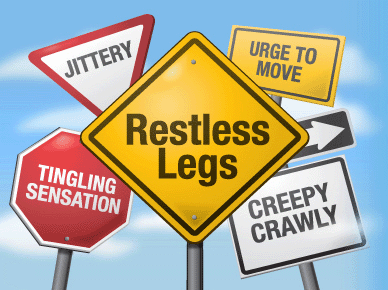Restless legs syndrome is a syndrome that patient feels an uncomfortable and strange feeling on the legs but he cannot describe exactly; and as a result of this feeling he can not fall asleep. As a rule, patient feels this strange feeing while he rests; and complains about the inability to explain it to other people and to doctors. Because, this feeling – which cannot be called as pain- is sometimes described as tingling, numbness, pull out of legs by the patient. Some patients describe this feeling as “my legs are being squeezed”. Patients get rid of this feeling only if they move their legs. Patient feels relaxed for some time after moving the legs; but would start to feel the same feeling only a few minutes later.
This is quite common disease in the community with a rate of 5%. Because of leg pain; the patients generally go to rheumatic disease experts or physic-therapists. However, it is easily distinguishable from other leg pains; because it stops when the legs are moved and starts again when the person rests.
Syndrome occurs more often as the patient gets older and its severity increases gradually. Because of restless on their legs, patients cannot watch TV at nights, they cannot go to visit their friends and most importantly, they have difficulty to sleep when they go to bed. Because of the strange feeling on the legs, patient has to move constantly. Many patients feel obliged to go out of the bed and walk around as they cannot sleep. Patients experience the same feeling when they wake up at midnight and they have difficulty of falling asleep again. Patients with restless legs syndrome feel uncomfortable in the environments where their movements are constrained; such as cinema, theater, long trips etc. There, they prefer to sit in corridor seat in order to be able to move their legs.
As Family members of patients generally have similar complaints, it is considered that the syndrome may be genetically transferrable.
Although in the studies it is rarely detected some diseases such as iron deficiency, uremia, diabetic, etc.; 95% of this syndrome emerge as idiopathic (cause unknown)
Lately, it has been revealed that; although the syndrome mostly affects the legs, it can rarely affect the arms. Following this development, the name of syndrome was changed as restless arms and legs syndrome.
SOURCE: Turkish Sleep Medicine Society (TSMS)




